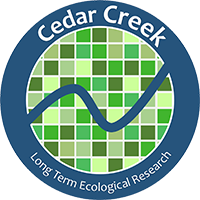In addition to cross-site experiments, CDR researchers are involved in a number of synthetic efforts that bring together data and concepts from LTER and other sites to achieve broader understanding and inform management and policy-making.
Below, we highlight three examples that are sponsored by the LTER Network Communication Office:
Scaling-Up Productivity Responses to Changes in Biodiversity. Experiments have demonstrated clear effects of local plant diversity on NPP, but whether these relationships can be extended to the regional and global scales at which biodiversity conservation and policy decisions are made remains unclear. This working group is scaling-up results from biodiversity experiments to natural communities by testing theoretical predictions and bridging gaps between experiments and observations. CDR is contributing data from multiple studies, including the biodiversity experiments and the Nutrient Network.
Advancing soil organic matter research: Synthesizing multi-scale observations, manipulations & models. Changes in soil C stocks can have substantial effects on the trajectory of atmospheric CO2 concentrations. Yet current ecosystems and ESMs are ill equipped to predict future soil C dynamics. This working group is refining and evaluating soil organic matter stabilization theories and producing a dataset that encompass the impact of experimental manipulations on soil organic matter at different sites. CDR is contributing data from multiple experiments.
Integrating Plant Community and Ecosystem Responses to Chronic Global Change Drivers: Toward an Explanation of Patterns and Improved Global Predictions. Chronic resource enrichment is thought to alter ecosystem functioning partly by altering the numbers of species, their relative abundances, and their identities, a hypothesis being tested by this working group. CDR is contributing data and expertise related to nutrient impacts on plant communities and relationships between biodiversity and ecosystem functioning.
Theory and Modeling
Ecological models and theory are critical tools for gaining insight into the general mechanisms governing ecological systems, developing hypotheses, and making predictions across large spatial and long temporal scales. A hallmark of the work at CDR has been the tight coupling of ecological theory and experiments. For example, some of the longest running experiments and observational studies at CDR were originally established to test theoretical predictions about competition for limiting resources and the effects of biodiversity on ecosystem productivity and stability. Current research continues to develop and test theory. The following are a few current research areas:
Linking Disease and Ecosystem Ecology. Experiments and long-term data from Cedar Creek have shown that plant diseases can change basic ecosystem processes such as ecosystem productivity and carbon storage. However, disease and ecosystem ecology do not share any common theoretical frameworks or models. CDR scientists are working with mathematicians to develop new theoretical models that integrate ecosystem and disease ecology. These models will help to understand how the pathogens that cause disease can mediate human impacts on the environment.
Scaling Biodiversity Using Remote Sensing. Recent advances in remote sensing across scales from leaves to ecosystems suggest that spectral diversity can be an important metric of biodiversity that can be detected remotely. Researchers at CDR are developing models that use spectral differences among species to predict plant diversity and ecosystem function, even in the absence of knowledge of plant identity or function. This work has far-reaching implications for deciphering how forthcoming hyperspectral sensors to be launched via satellite can contribute to monitoring biodiversity continuously at the global scale.
Improving C-N-P Coupling in Process and Earth System Models. CDR scientists are using LTER and NutNet data to improve the representation of decomposition in the Microbial ENzyme Decomposition (MEND) model. Empirical work on C-N-P interactions is being integrated into a modeling framework, via parameterization, model development, and model evaluation of the MEND model. The MEND is being incorporated into the Community Land Model (CLM).
Incorporating Trait Variation into Earth System Models. Plant traits influence ecosystem scale properties and processes and thus have become integral components of many ecosystem and land surface models. CDR scientists are advancing understanding of terrestrial ecosystem response to global environmental change by incorporating plant and soil microbial traits and their interactions into Earth System Models, building on CDR plant trait research.
